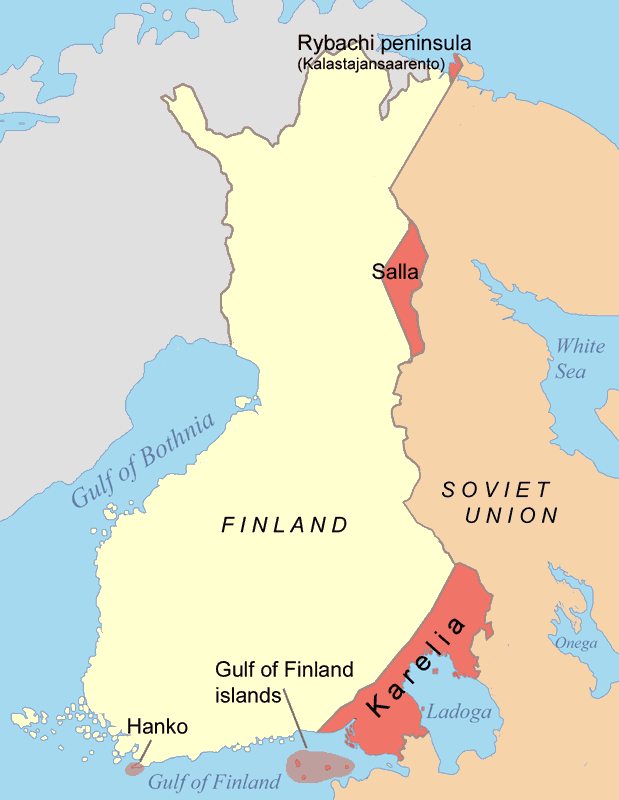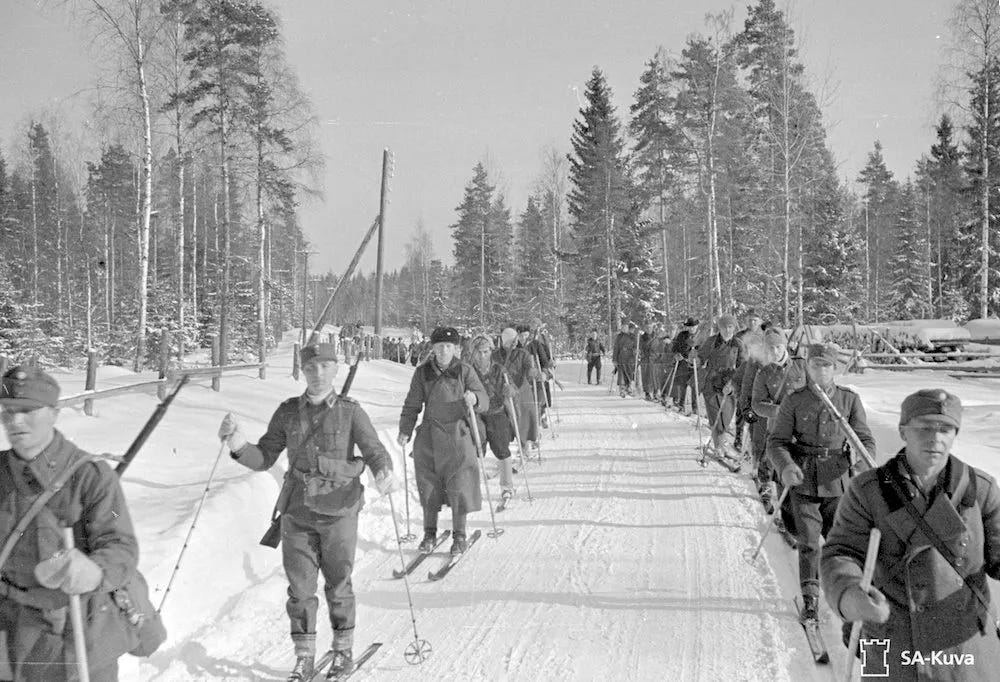The Price of Independence
Eighty-four years ago today, the Winter War came to an end as the Treaty of Moscow came into effect. Finland remained Independent but paid a heavy price.
On November 30, 1939, the Soviet Union invaded Finland.
As described by the Imperial War Museum1:
A faked border incident gave the Soviet Union the excuse to invade on 30 November 1939. The Red Army was ill-equipped, poorly led, and unable to deal with the Finnish terrain and winter weather. Though small and under-resourced, the Finnish Army was resilient, well-led and was able to use knowledge of the terrain to good effect.
Despite the overwhelming odds, Finland resisted for three months with little outside assistance. However, it was only a matter of time before the balance of power tipped in the Soviet Union’s favor.
The Red Army came back strongly. Their command structure was reorganized, modern equipment was brought in and there was a badly needed change of tactics and personnel.
By early February 1940, the Finnish Army was exhausted and their defensive lines eventually overrun. Outside help never materialized. Finland was forced to sign the Treaty of Moscow on 12 March 1940, which ceded 11 per cent of its territory to the Soviet Union.

The price of peace was high; the Soviets demanded more land than they had in negotiations leading up to the war. But Finland could remain independent; the puppet communist government in waiting would not see power.
From Finland at War2:
Continuing Finnish freedom came with a high human cost. The number of civilian and military casualties totaled 24,918 dead and 43,557 wounded of whom 9,562 were to remain permanently disabled. The total losses for the Soviet Union have never been published, but the best estimates put them as well over 200,000 killed and a much larger number wounded.
The 420,000 refugees that suddenly streamed out of the lands lost to the USSR created a major internal socio-economic problem. To preserve communities, Finns took pride in relocating people from the same village into the same vicinity. These settlers were then compensated for all lost property and possession by the Finnish government; as a result, 30 per cent of all privately owned forests and 63 per cent of arable land were redistributed to them.
All this is a nation with a population of around 3.5 million. Yet the war was not over for Finland. The Second World War would have two more chapters: the Continuation War (June 1941-September 1944) in which Finland tried to regain its lost territory and the Lapland War (September-November 1944), in which Finland had to expel all German soldiers as part of the Moscow Armistice. In the end, Moscow dictated the harsh terms that included heavy reparations and a loss of military capability.
I had the opportunity to visit the Kauniala Veterans Hospital in 2019, where I met Finnish veterans of the Second World War. Most of the residents were in their mid to late 90s at the time, and few spoke English. So, I practiced my Finnish and enjoyed the company.
Finland stood alone, and these men and the women who supported them ensured that it remained free. Today Finland is a strong member of NATO, thanks to men like this veteran.
A Short History Of The WW2 Winter War | Imperial War Museums (iwm.org.uk)






I think it's a good time to get Karelia back while the bear is interested in honey elsewhere.